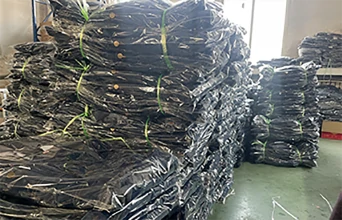+8615630398555
- Afrikaans
- Albanian
- Arabic
- Armenian
- Basque
- Belarusian
- Bengali
- Bulgarian
- Croatian
- Czech
- Danish
- Dutch
- English
- Esperanto
- Finnish
- French
- German
- Greek
- Hebrew
- Hindi
- Indonesian
- irish
- Italian
- Japanese
- Javanese
- kazakh
- Rwandese
- Korean
- Kyrgyz
- Latin
- Latvian
- Luxembourgish
- Malay
- Myanmar
- Nepali
- Persian
- Polish
- Portuguese
- Romanian
- Russian
- Serbian
- Slovak
- Spanish
- Swedish
- Tagalog
- Tajik
- Turkish
- Ukrainian
- Uzbek
- Vietnamese
Jul . 11, 2024 04:26 Back to list
Safety gloves for protection against hazards in various industries and work environments.
Safety gloves are an essential piece of personal protective equipment that can protect the hands from a variety of hazards in the workplace. These gloves are designed to provide protection against cuts, abrasions, punctures, chemical exposure, and even heat and cold. By wearing safety gloves, workers can significantly reduce the risk of hand injuries and ensure their overall safety on the job.
One of the most common types of safety gloves is the cut-resistant glove, which is made from materials such as Kevlar, steel mesh, or high-performance polyethylene. These gloves are specifically designed to protect the hands from sharp objects such as knives, glass, or metal. By wearing cut-resistant gloves, workers in industries such as construction, manufacturing, and food processing can prevent lacerations and other serious injuries.
Chemical-resistant gloves are another important type of safety glove that is designed to protect the hands from exposure to hazardous chemicals. These gloves are made from materials such as neoprene, nitrile, or PVC and are designed to provide a barrier against liquids, acids, and other harmful substances. Workers who handle chemicals or work in laboratories must wear chemical-resistant gloves to protect their hands from burns, skin irritation, and other dangers.
In addition to cut-resistant and chemical-resistant gloves, there are also other types of safety gloves available that provide protection against specific hazards

safety gloves. For example, heat-resistant gloves are designed to protect the hands from high temperatures, while cold-resistant gloves are designed to keep the hands warm in cold environments. It is important for employers to provide workers with the appropriate safety gloves for their specific job tasks and hazards. By conducting a thorough risk assessment, employers can determine the types of gloves that are required to ensure the safety of their workers. Additionally, it is essential for employers to train workers on the proper use and care of safety gloves to maximize their effectiveness. In conclusion, safety gloves are a crucial piece of personal protective equipment that play a vital role in ensuring the safety of workers in various industries. By wearing the appropriate safety gloves, workers can protect their hands from cuts, abrasions, chemical exposure, and other hazards. Employers must prioritize the safety of their workers by providing them with the necessary safety gloves and ensuring they are properly trained on their use. By doing so, employers can create a safer work environment and prevent hand injuries and accidents.

safety gloves. For example, heat-resistant gloves are designed to protect the hands from high temperatures, while cold-resistant gloves are designed to keep the hands warm in cold environments. It is important for employers to provide workers with the appropriate safety gloves for their specific job tasks and hazards. By conducting a thorough risk assessment, employers can determine the types of gloves that are required to ensure the safety of their workers. Additionally, it is essential for employers to train workers on the proper use and care of safety gloves to maximize their effectiveness. In conclusion, safety gloves are a crucial piece of personal protective equipment that play a vital role in ensuring the safety of workers in various industries. By wearing the appropriate safety gloves, workers can protect their hands from cuts, abrasions, chemical exposure, and other hazards. Employers must prioritize the safety of their workers by providing them with the necessary safety gloves and ensuring they are properly trained on their use. By doing so, employers can create a safer work environment and prevent hand injuries and accidents.
Latest news
-
Work Reflective Vest: A Silent Guardian of Security
NewsJul.10,2025
-
Vest Reflective Safety: A Safety Lighthouse in Low Light and High Traffic Environments
NewsJul.10,2025
-
Soft Cotton Polo Shirts: A Fashionable and Practical Choice for Multiple Scenarios
NewsJul.10,2025
-
Soft Cotton Polo Shirts: A Fashionable and Practical Choice for Multiple Fields
NewsJul.10,2025
-
Reflective Vest: The Light of Industry and Outdoor Safety Protection
NewsJul.10,2025
-
Polo Shirt: A versatile and fashionable item that can be worn in one outfit
NewsJul.10,2025
Copyright © 2025 Handan Xinda Qihang Trading Co., Ltd. All Rights Reserved. Sitemap | Privacy Policy




